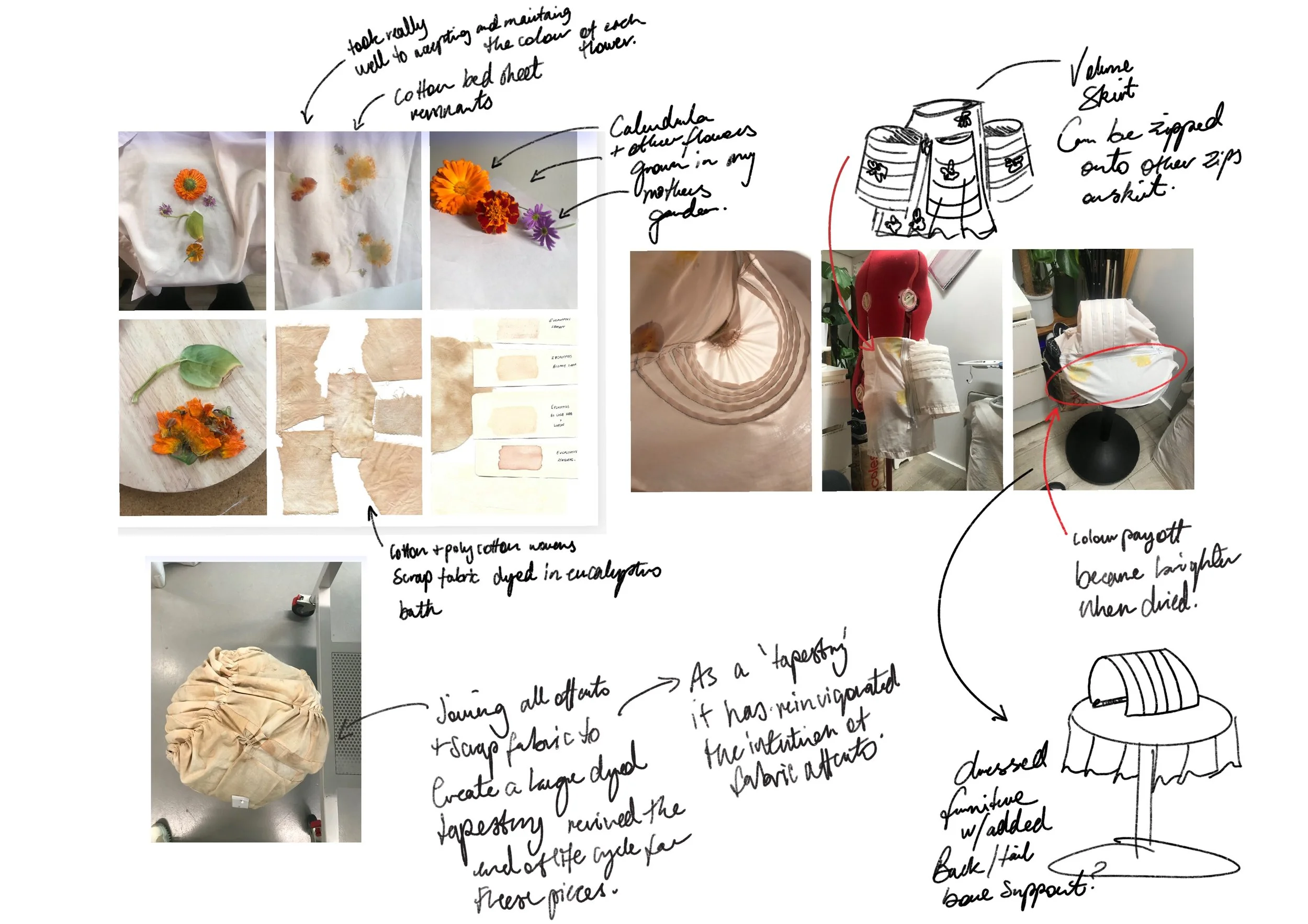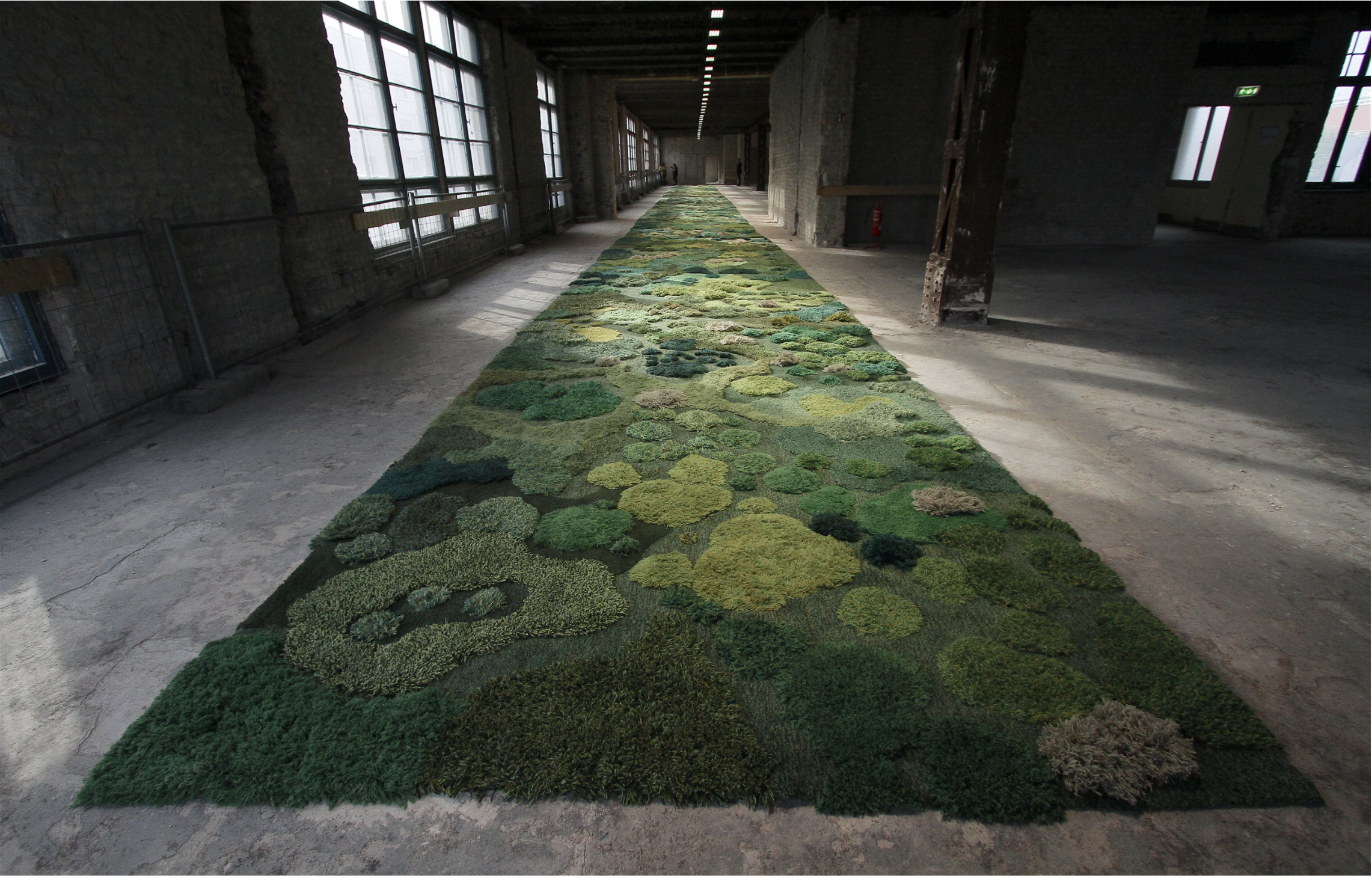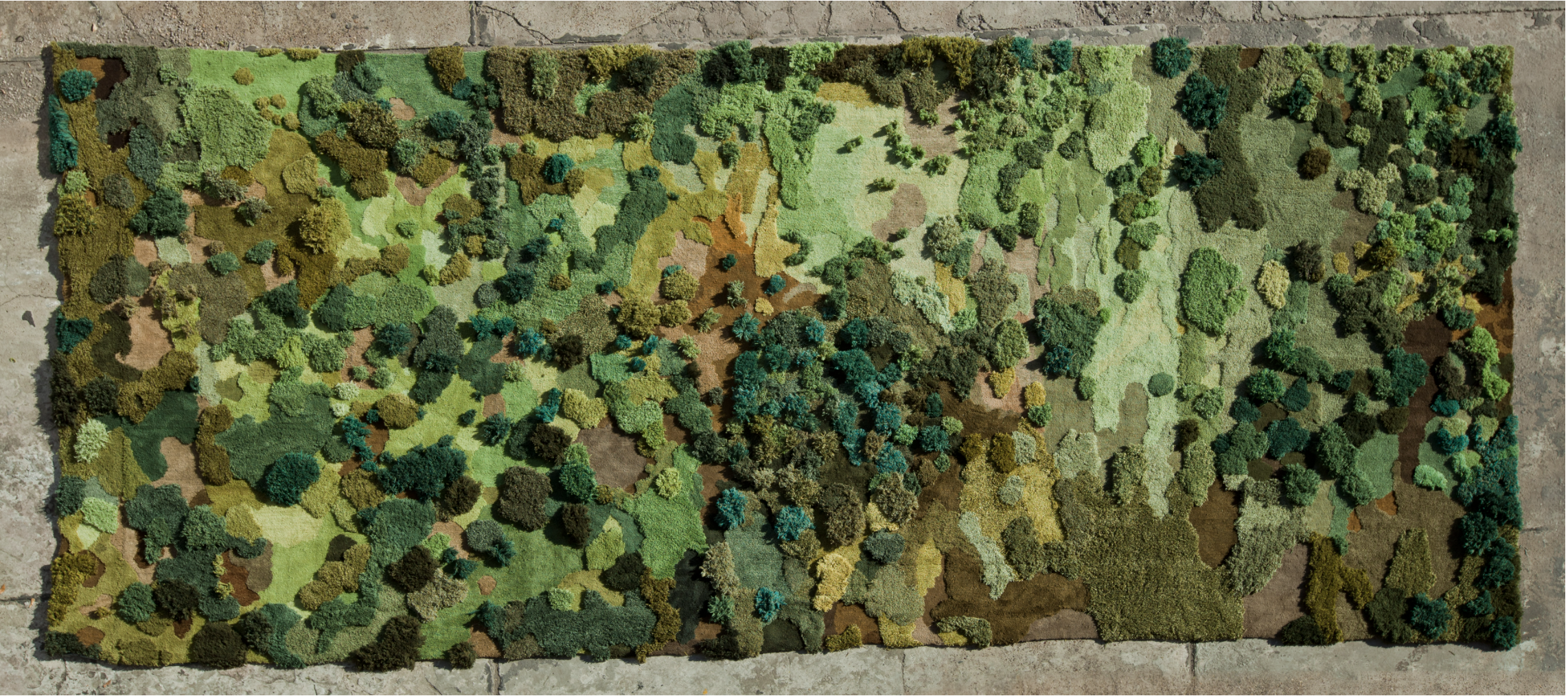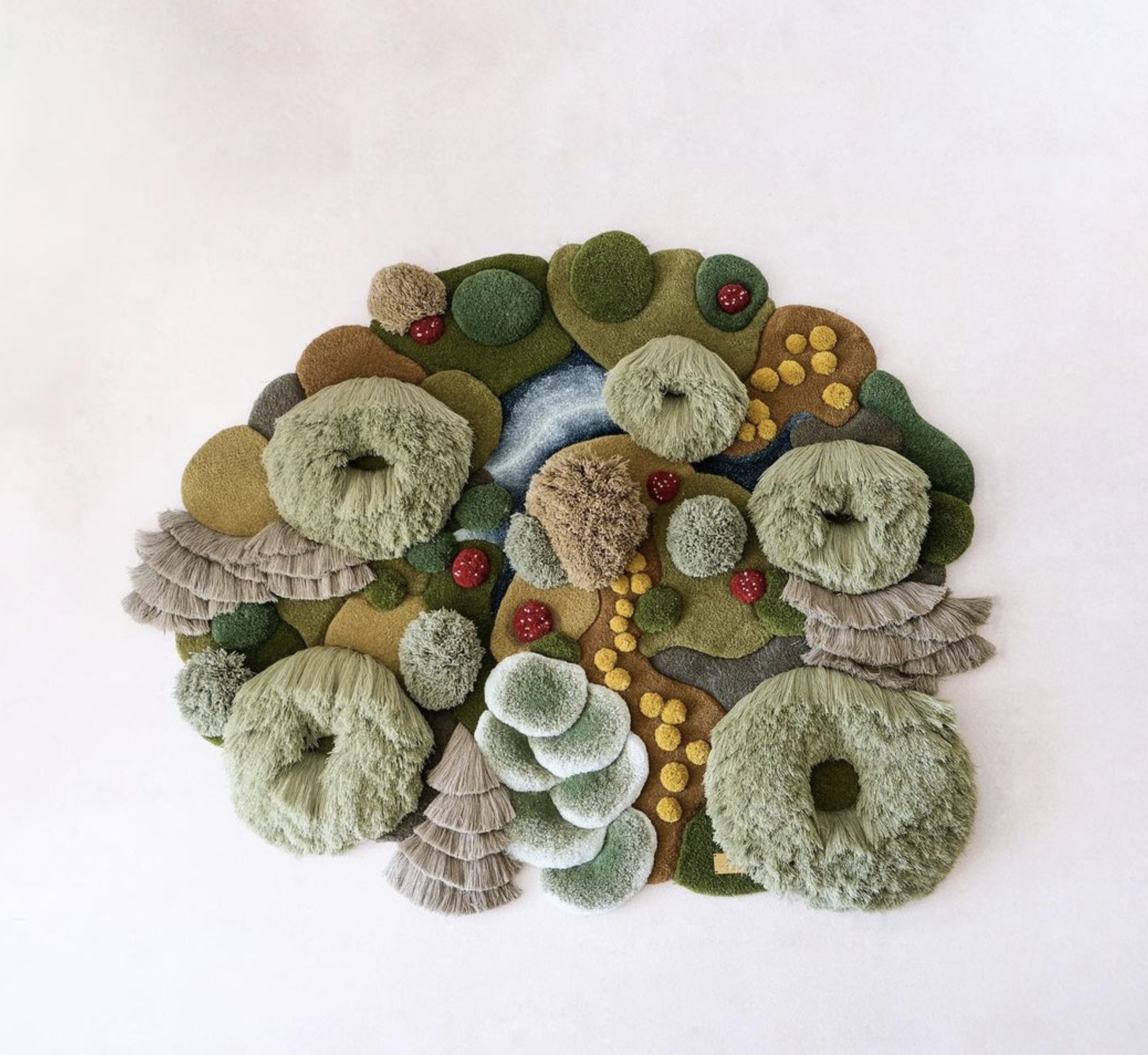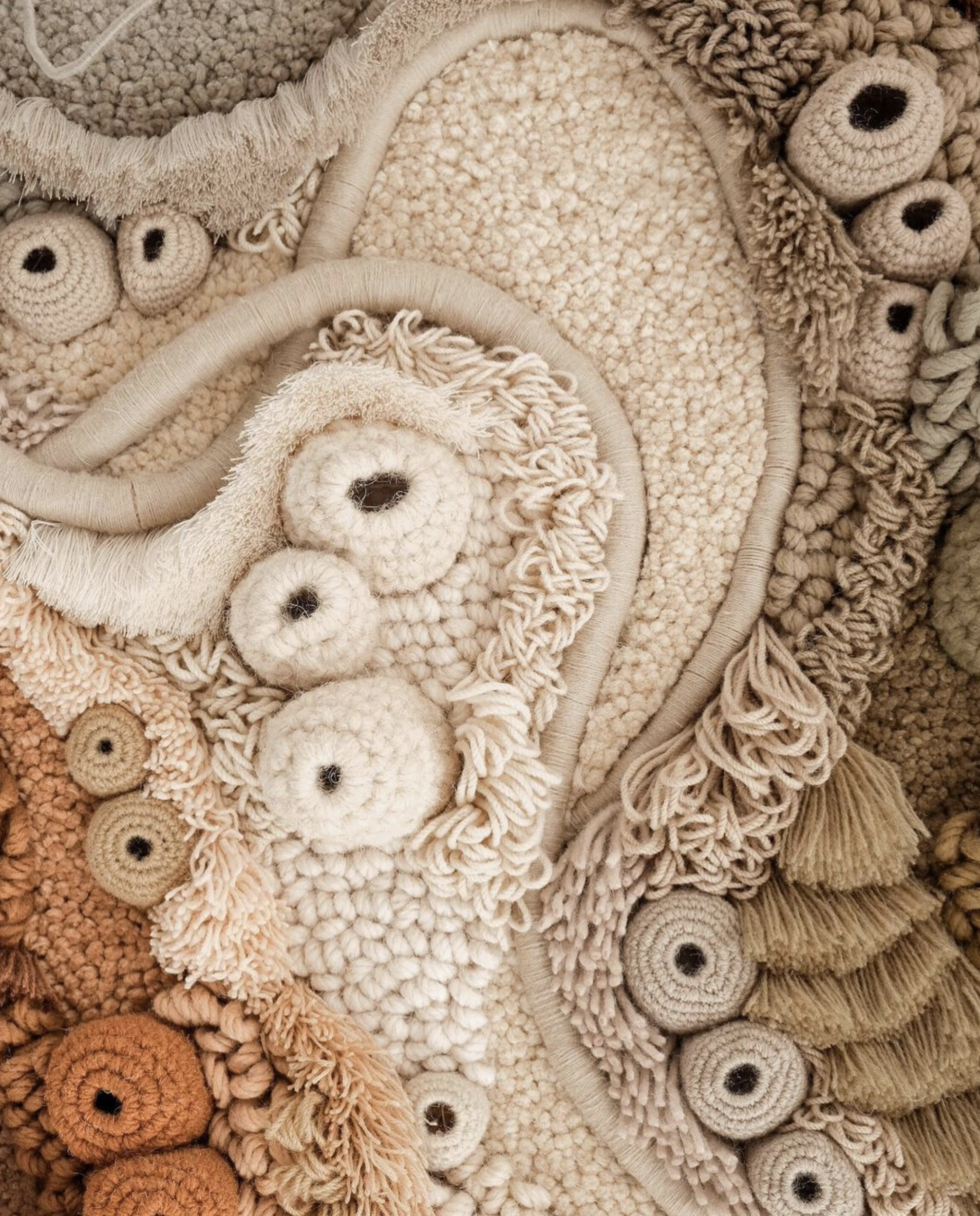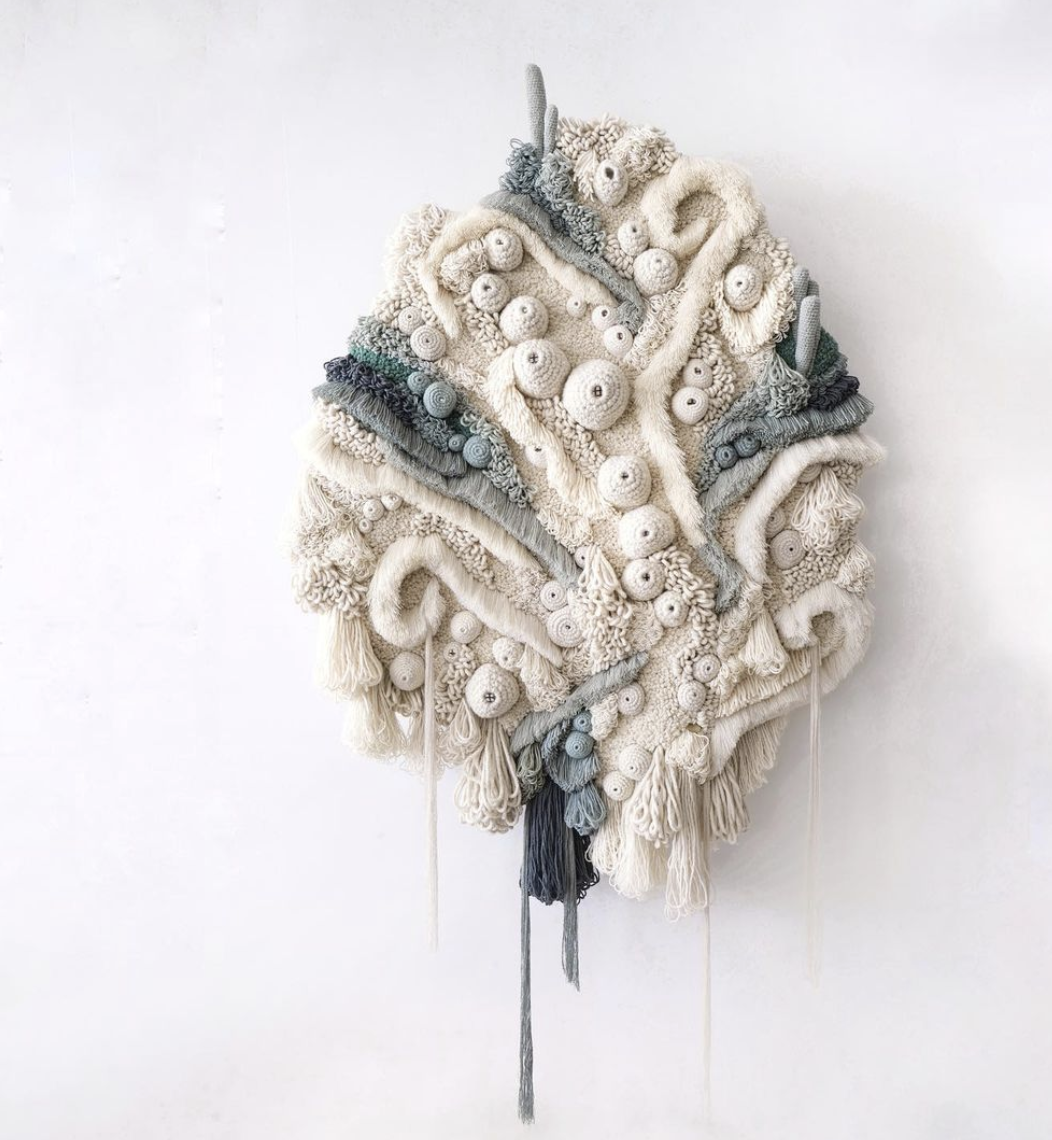Zero waste T-shirt
Natural dye & Shibori
Sustainable Making
Week Three: trialling and observing hydrophilic and hydrophobic materials in altered states
Zero waste T-shirt
.
Zero waste T-shirt .
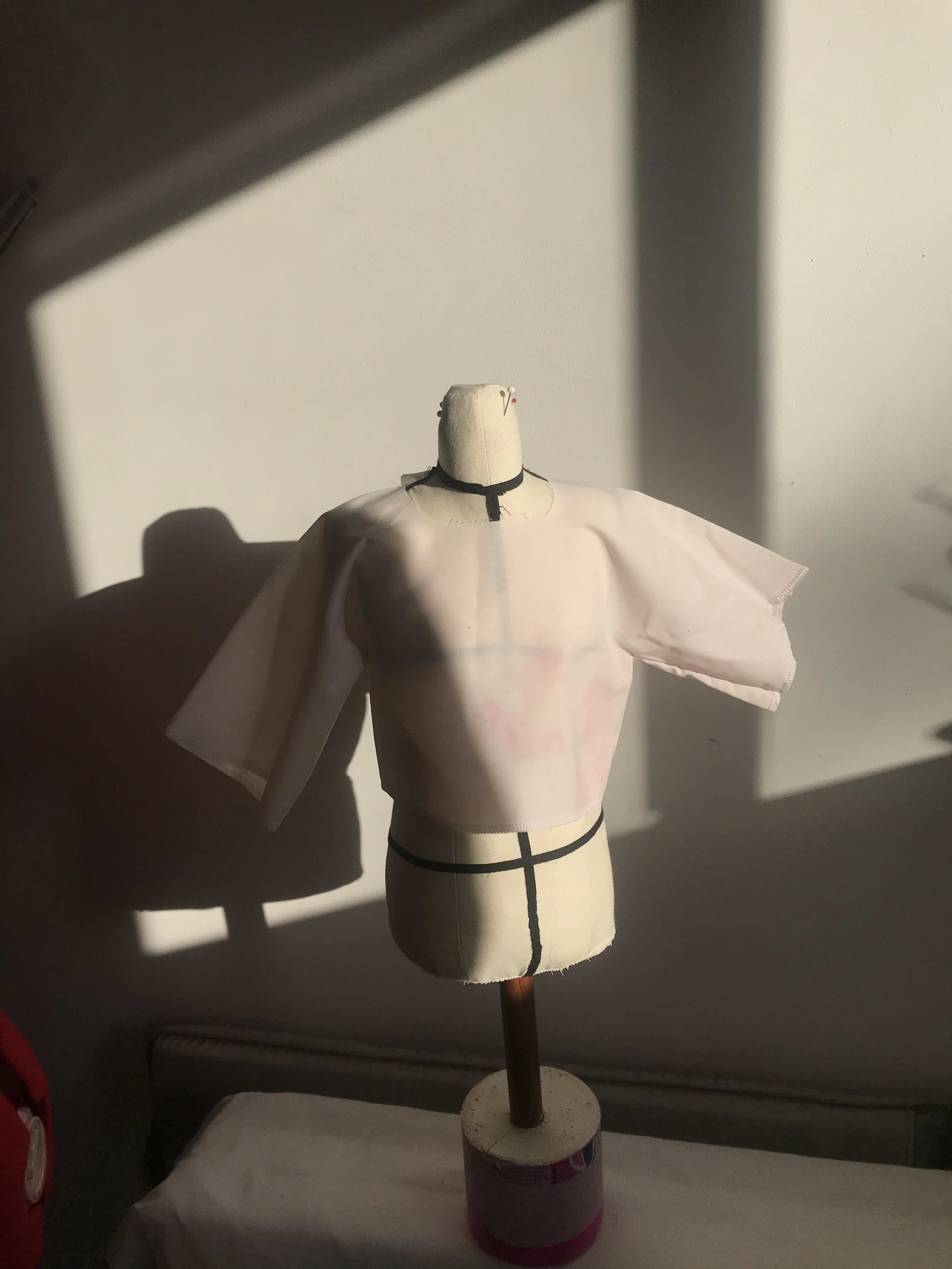
Front of Zero waste T-shirt in cotton fabric (accidentally dyed in the wash with pink gloves), light weight, easy to cut from original fabric
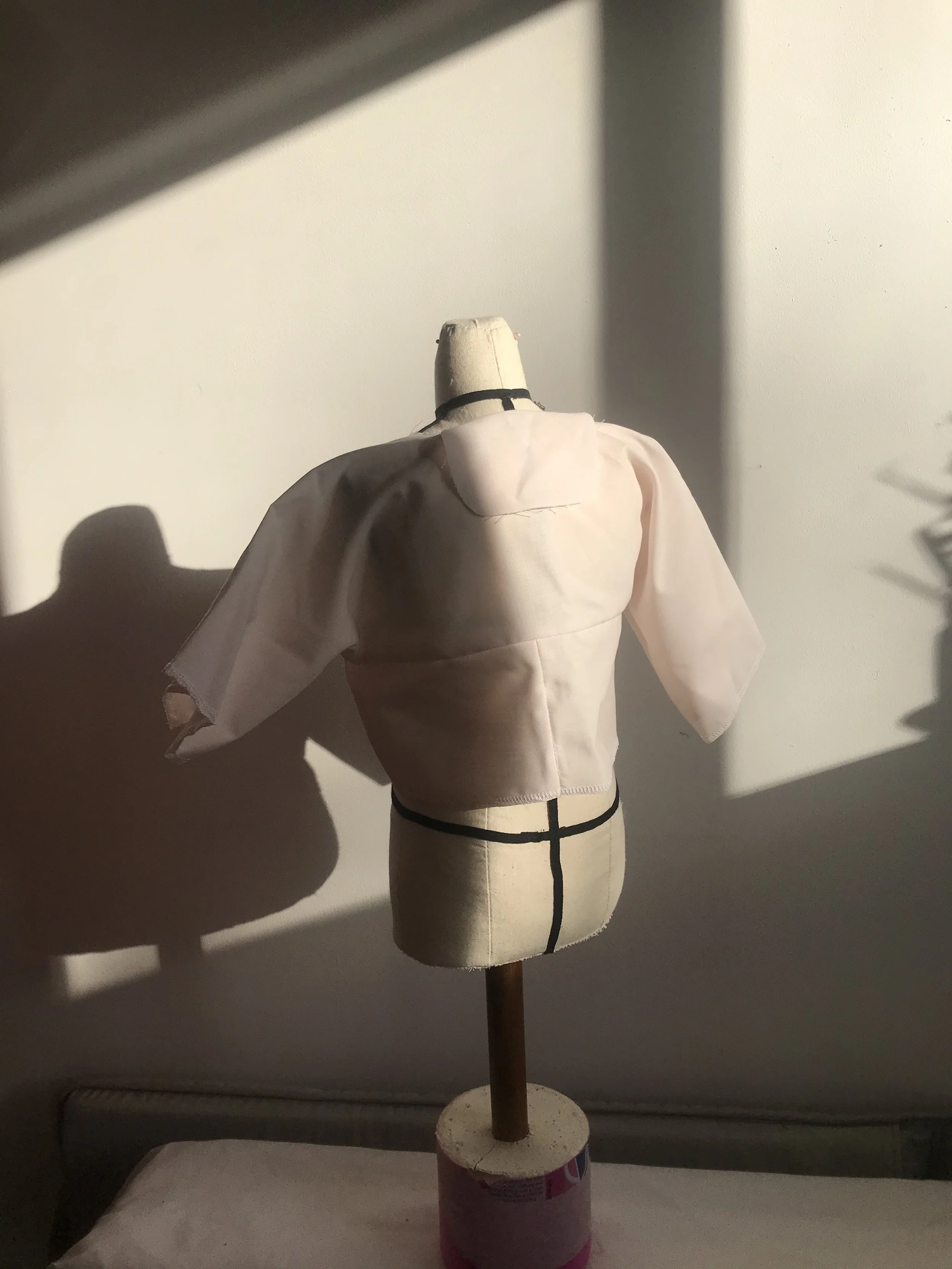
Back of Zero waste T-shirt: I did feel as though this pattern was an efficient use of fabric, however you're left with a circular flap at the back of the neck that may benefit from being attached to the shirt to avoid discomfort for the wearer (or can be an optional choice left up-to the wearer?
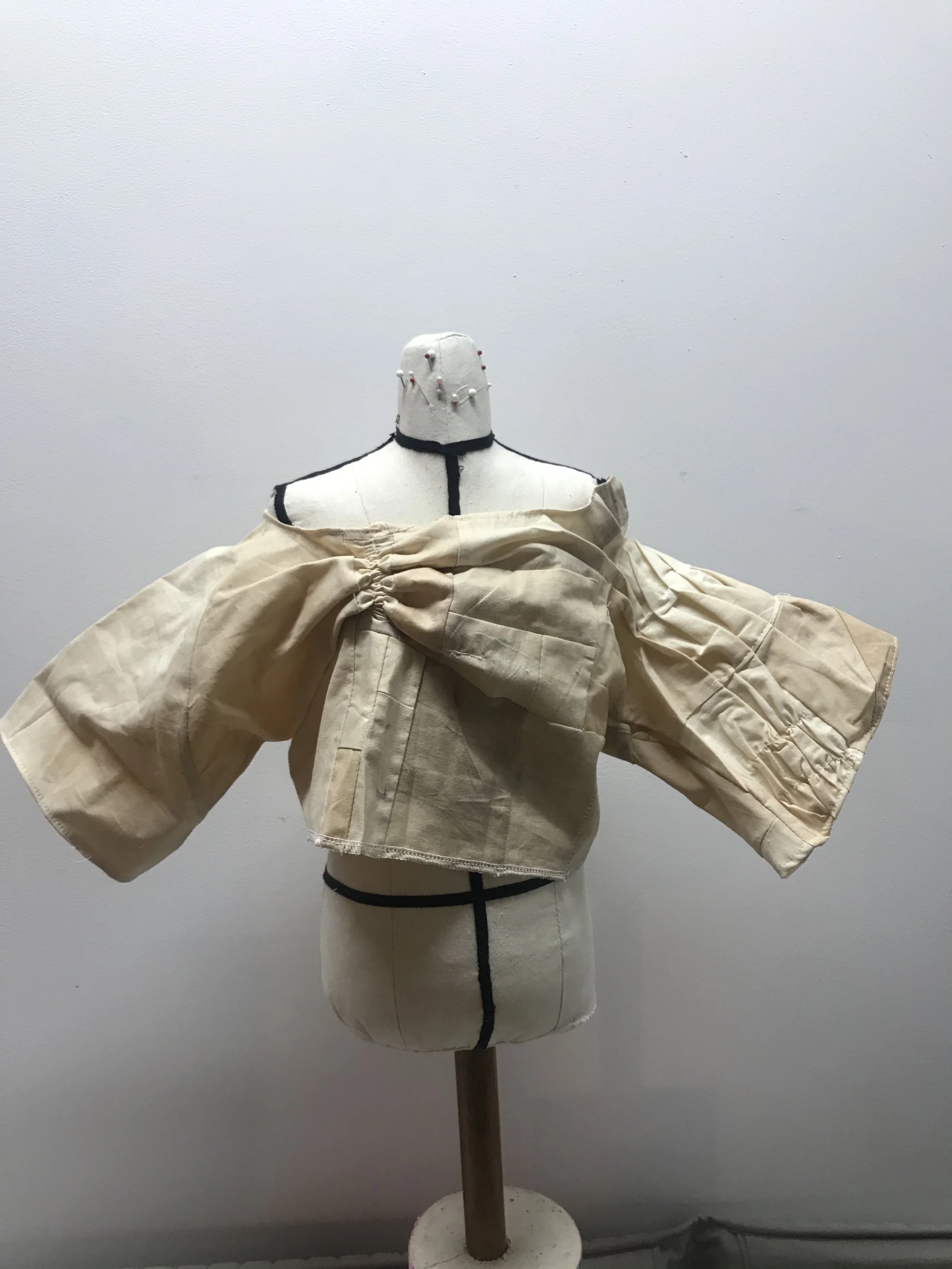
Zero Waste T-shirt Front made with naturally dyed cotton offcuts that have been overlocked together into patchwork and gathered in various places. Made for a difficult cut from the pattern, created an en even neckline with awkward gathers at the neck line and seam lines.
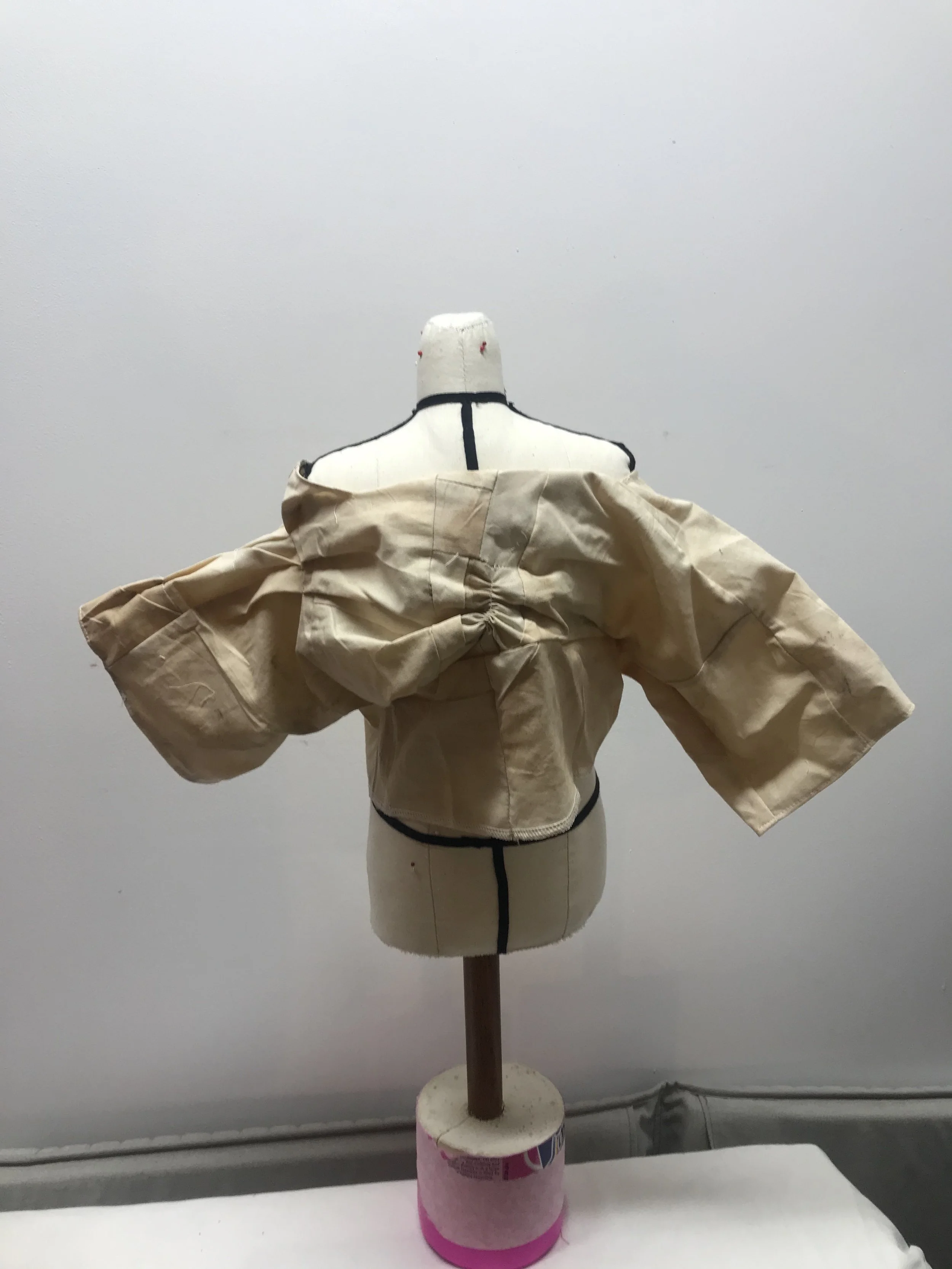
Zero waste T-shirt sample 2 back view, overall a lightweight and soft handle on sample, would benefit from having added the gathers and pleats after pattern had been cut from the flat patchwork
“Is Jewellery luxury?” with Robyn Healy
Changing the idea of value through context and conversation, giving the literal item a new perspective then embedding value through narrative and taking time to invest energy and reflection to a inanimate object - which in turn advocates for that inanimate object.
“Presenting time for eternity” - Tenant of culture:
This quote stood out to me as it spoke to the impact a physical garment/ fashioned object can have and does have in the world once it is given “Life”. Each physical fashioned item presents time for eternity, no matter wether it is biodegradable or not, there are always repercussions for the actions of creating in the first place. Garments and fashioned objects leave a time stamp.
This understanding is beautifully orchestrated through the use of post consumer products that have been reimagined/ re-fashioned into new wearable pieces that retain the “time stamp” of it’s original context.
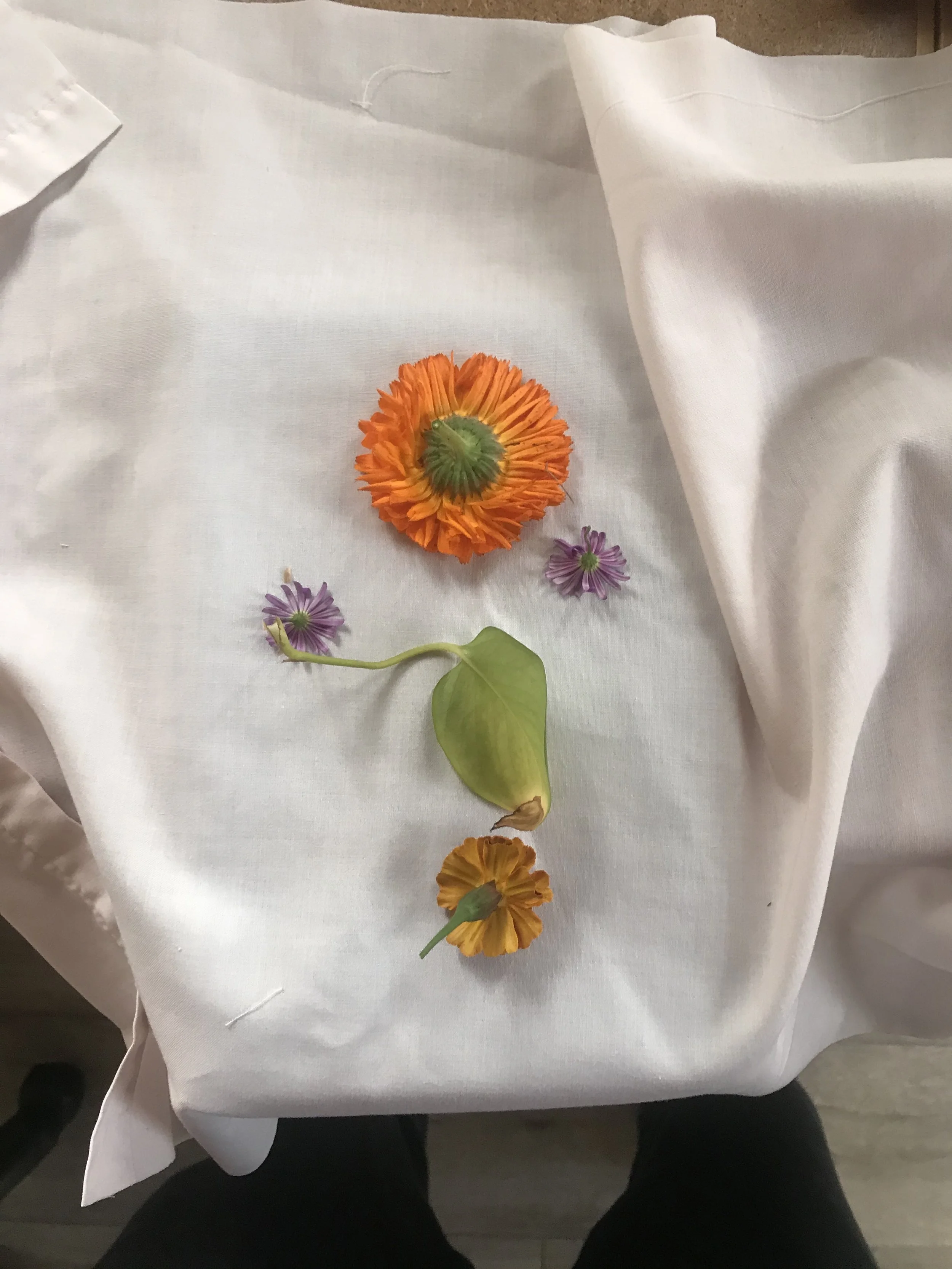
Fresh flowers faced down on cotton sample fabric before stamping
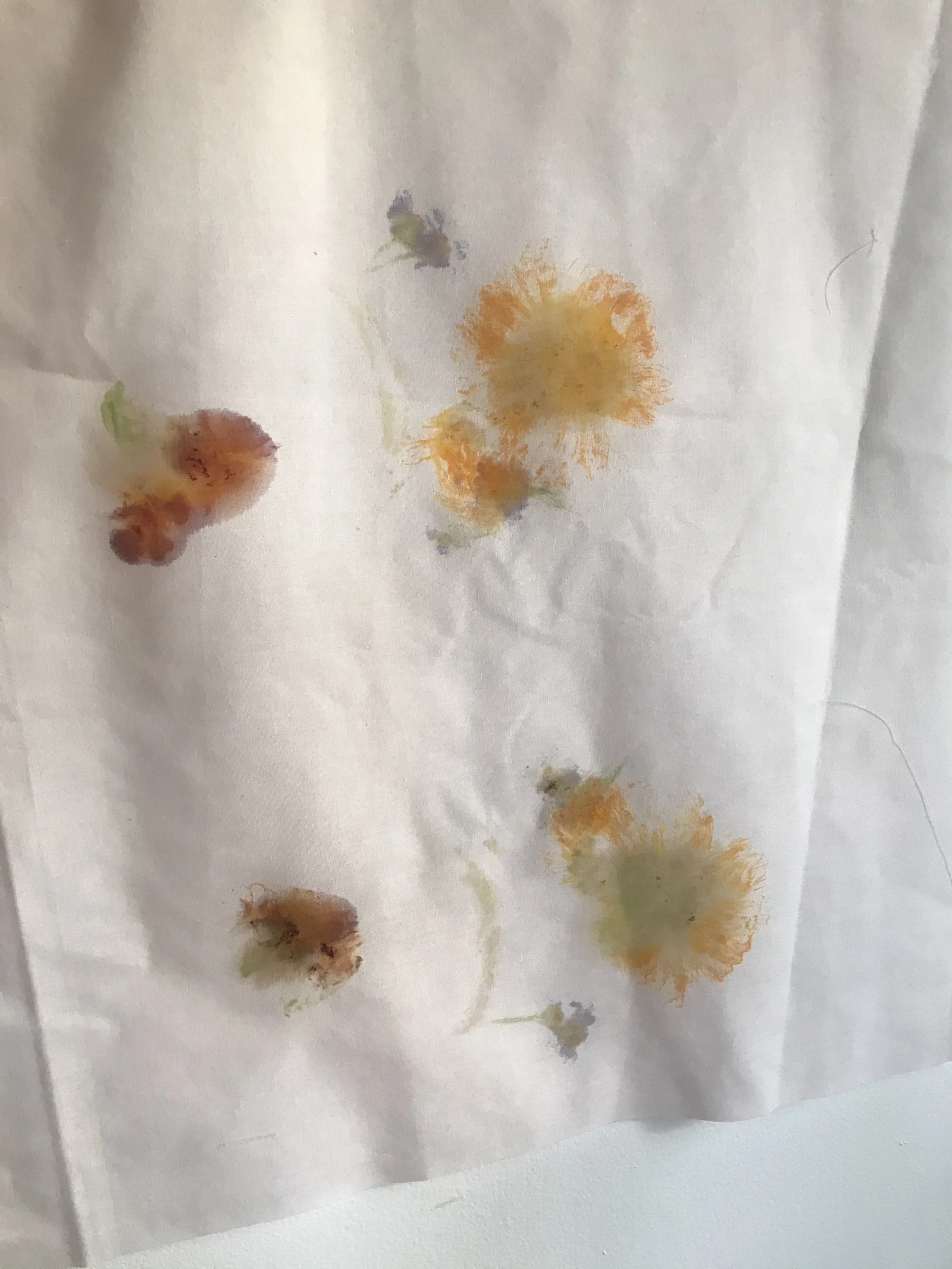
Flowers stamped onto cotton fabric ready to dry, result is very light yet indicative of flowers
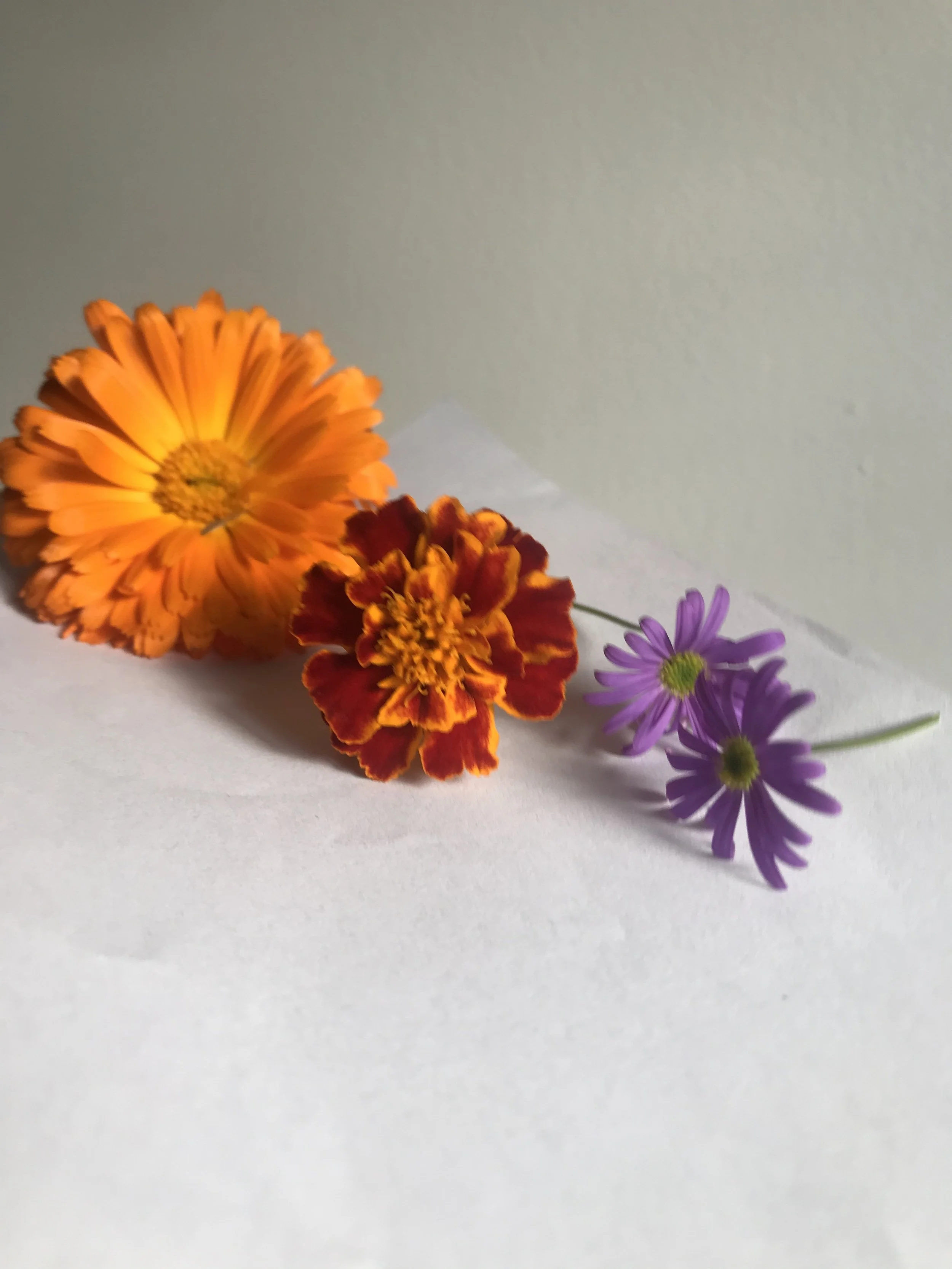
Calendula and other flower selection from my mums backyard, all vibrant colours, did notice that the smaller purple flower had a harder time showing up in the stamp as it didn't cover as much surface level as the others
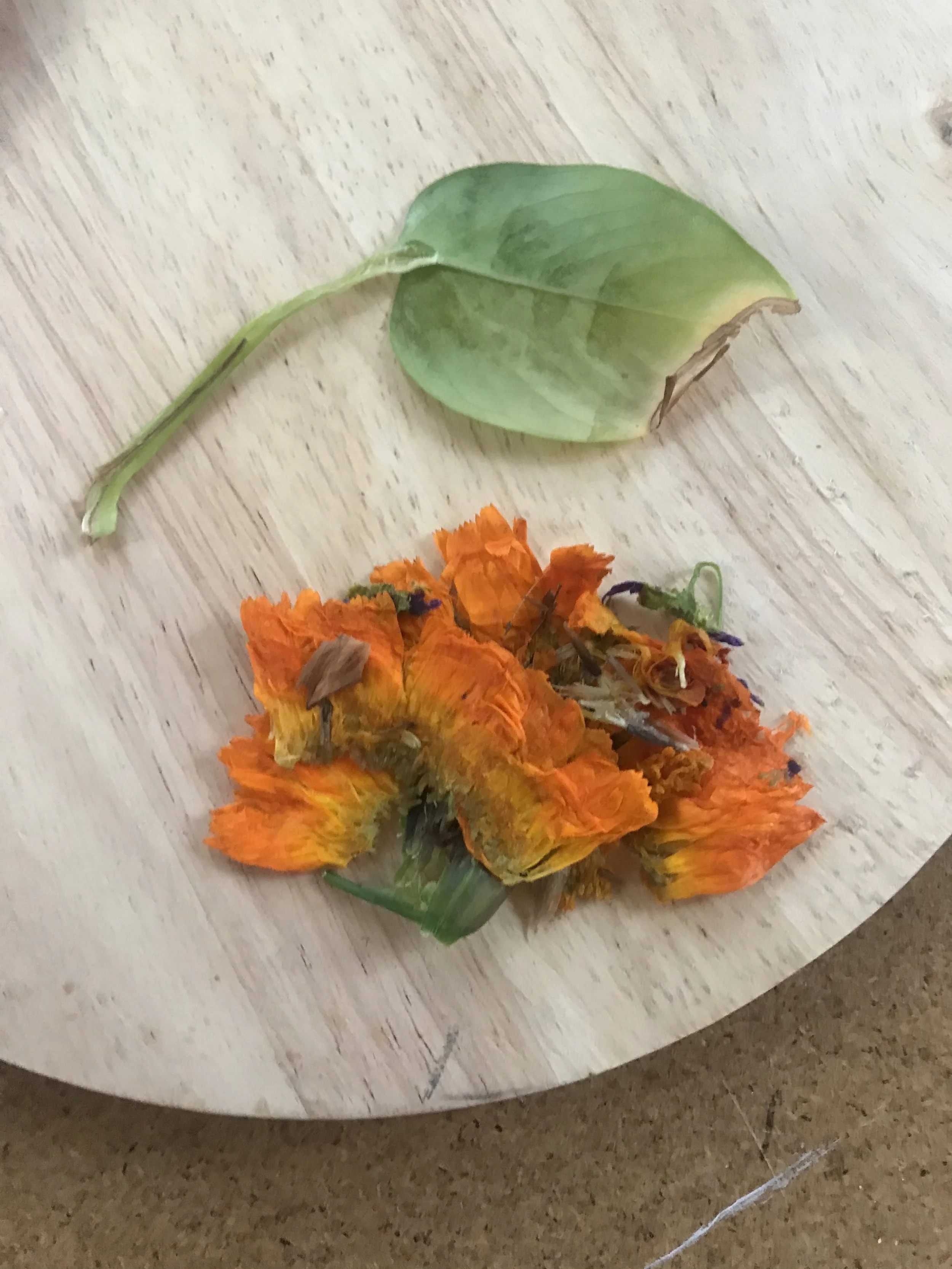
Post stamping of flowers - using natural material for colour and wasting away remnants, however flowers remain biodegradable and a greater alternative to manufactured dyes
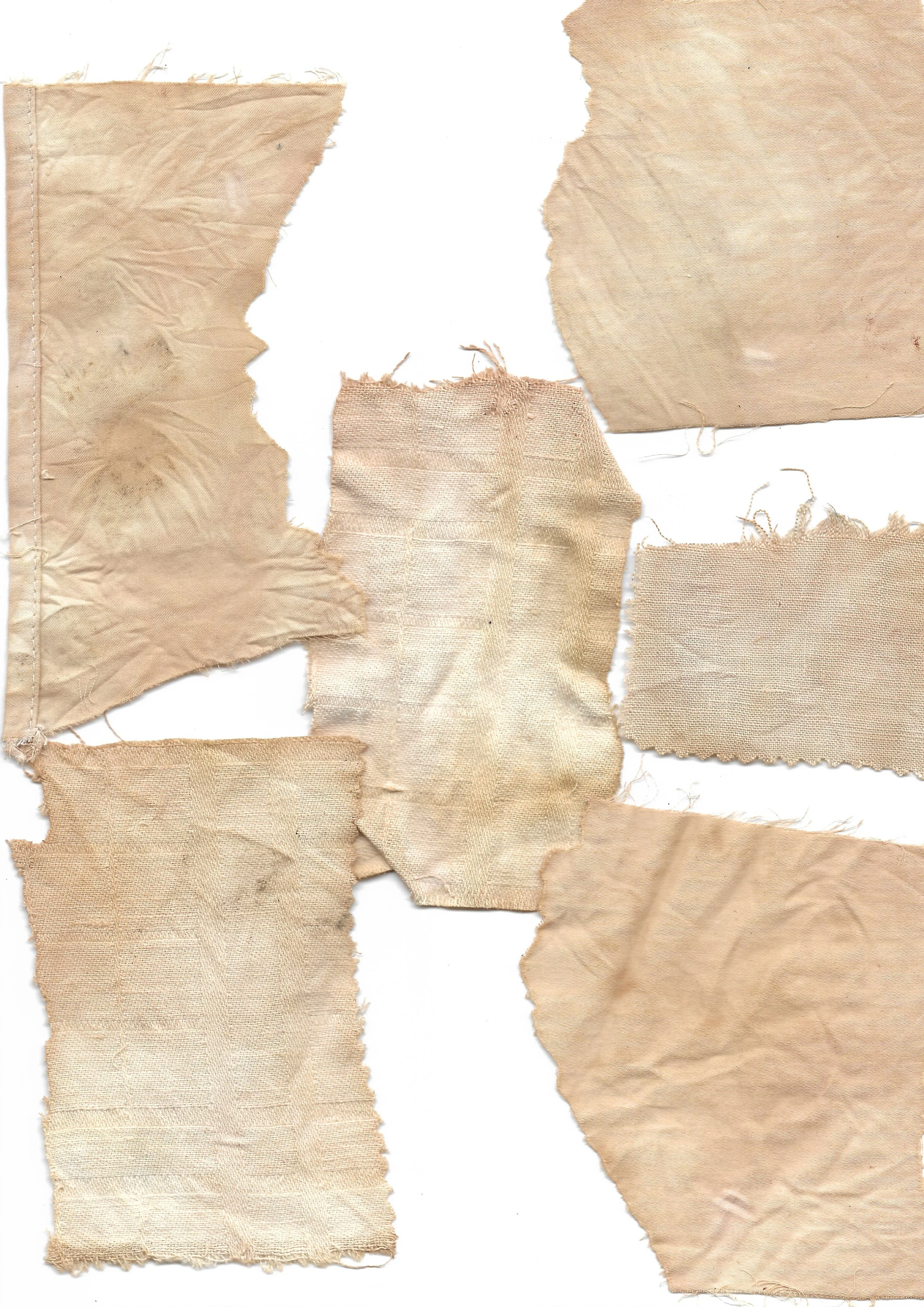
Woven Cotton remnants post natural dye trial with eucalyptus; would be perfect as a simple patchwork T-shirt, Long sleeve and/or over shawl
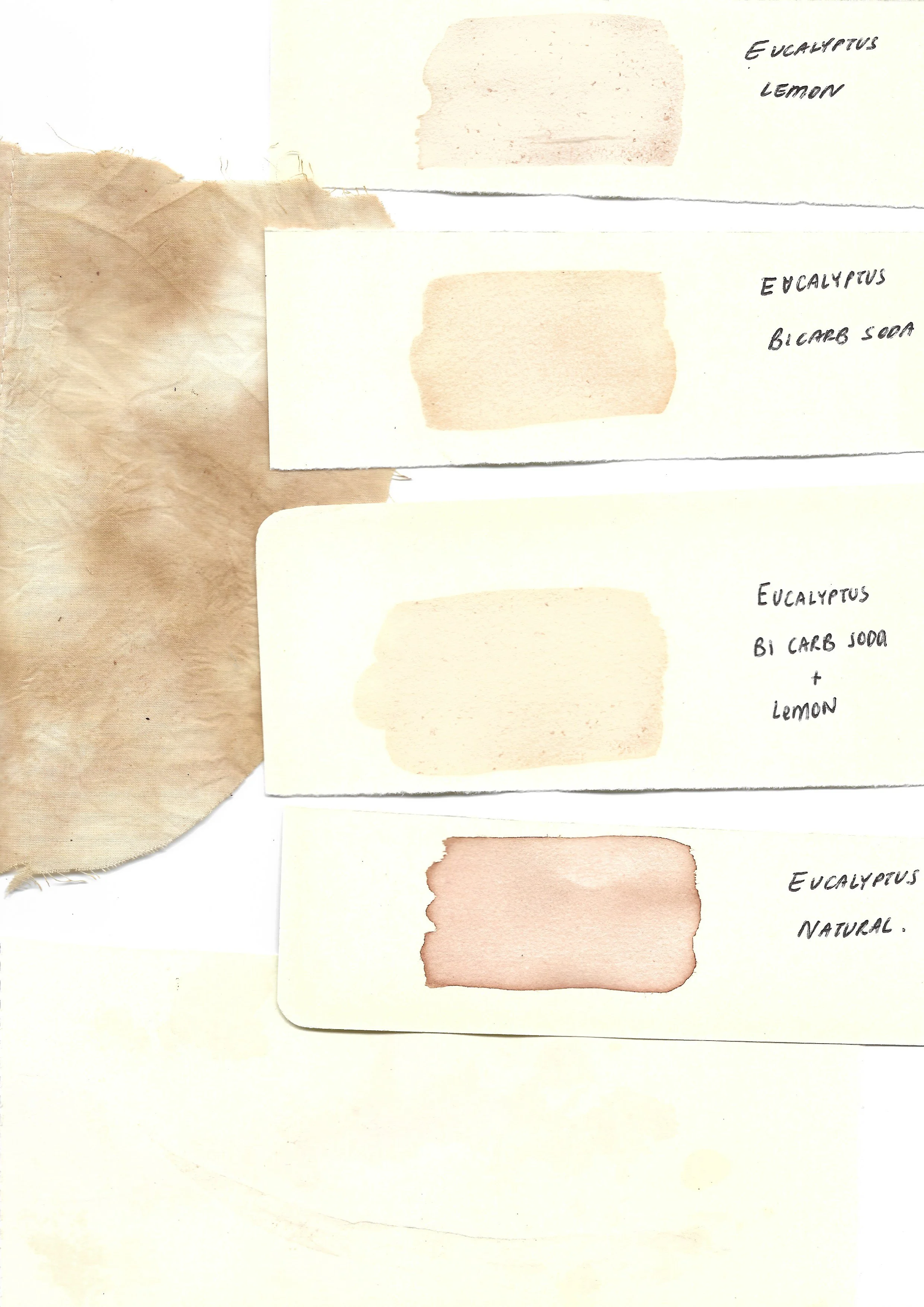
Natural dye Sample cards
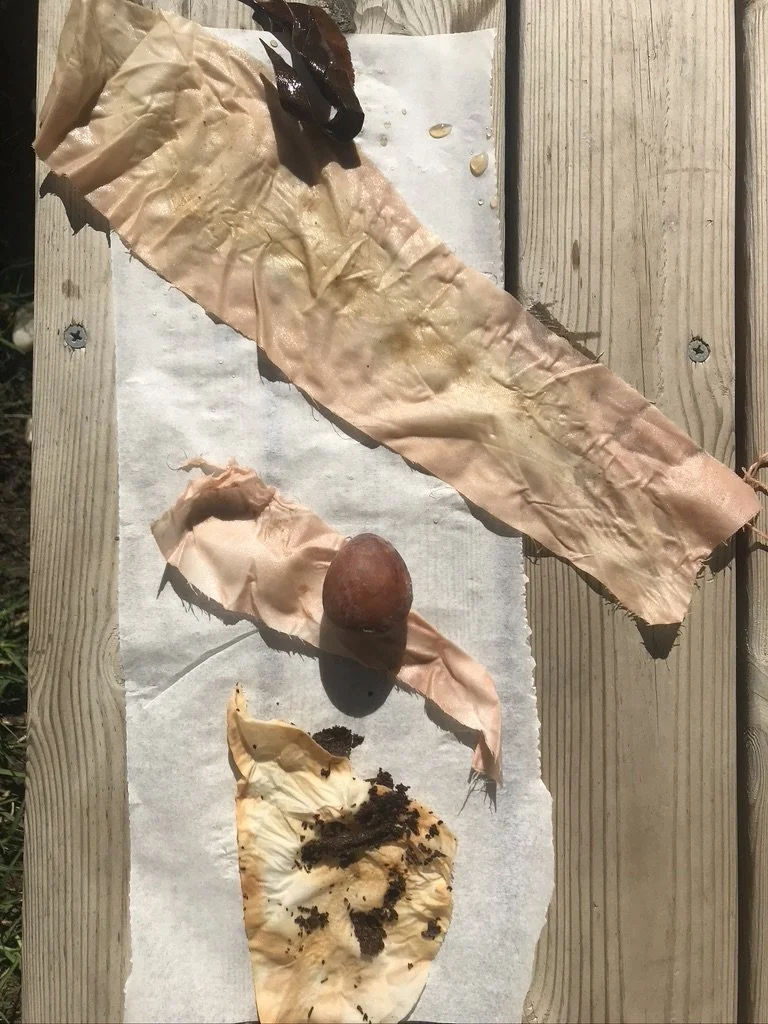
Top: Eucalyptus leaves wrapped in cotton sample, Middle: Avocado seed wrapped in cotton off-cut, Bottom: Tealeaves wrapped in cotton sample - Great way to use discarded food waste and eroding plant material
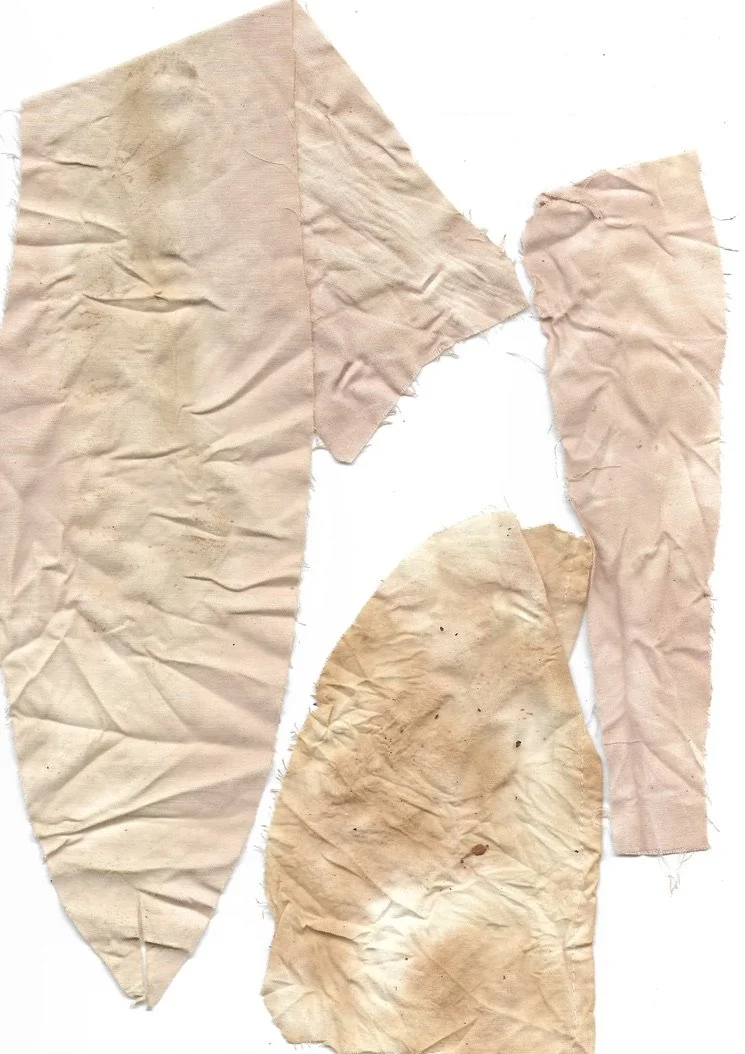
Eucalyptus leaf, Earl Grey tea and avocado pip samples after they've been dried
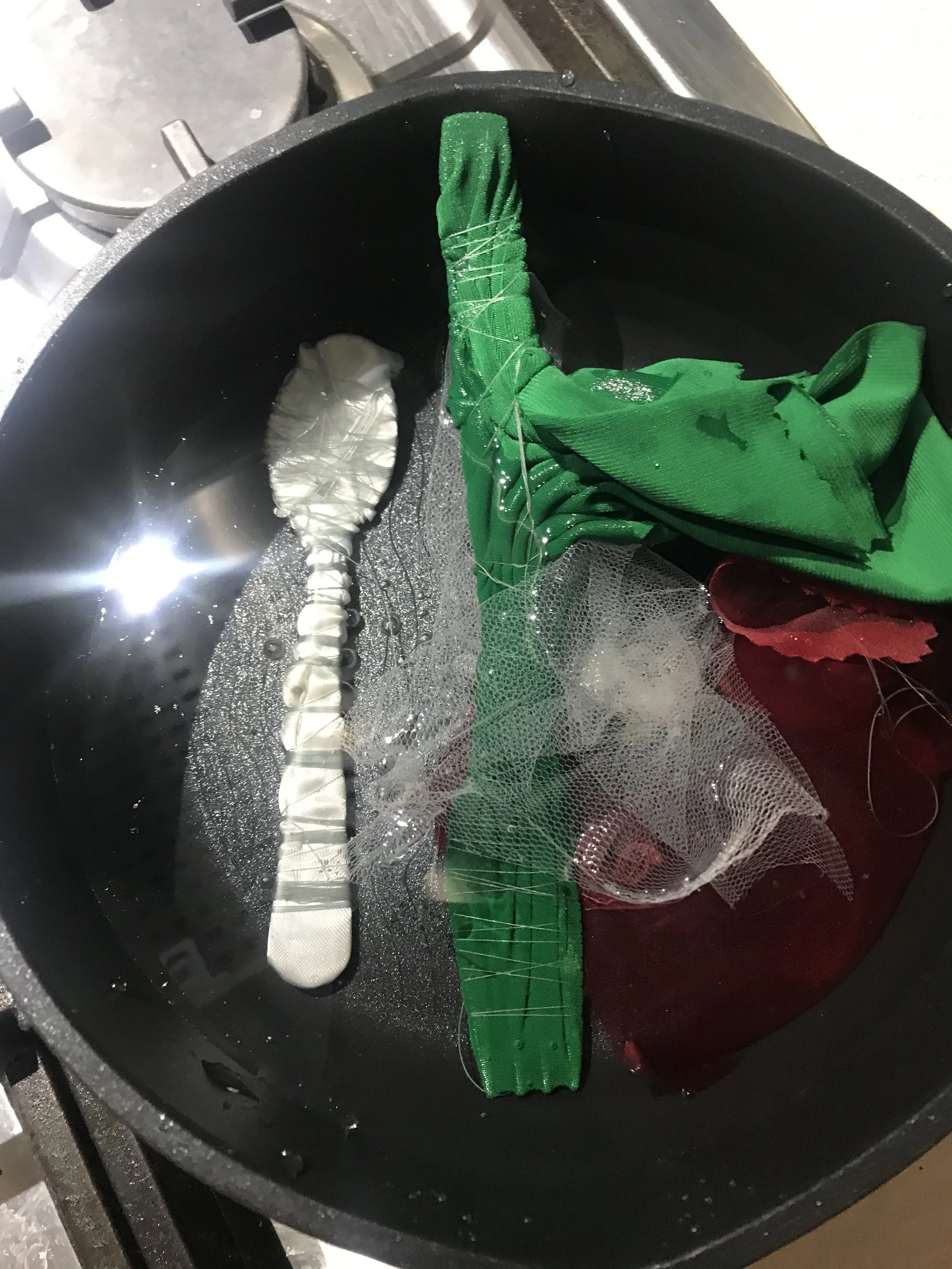
Spoon, Fork & Marble samples boiling in a pot for just under a minute
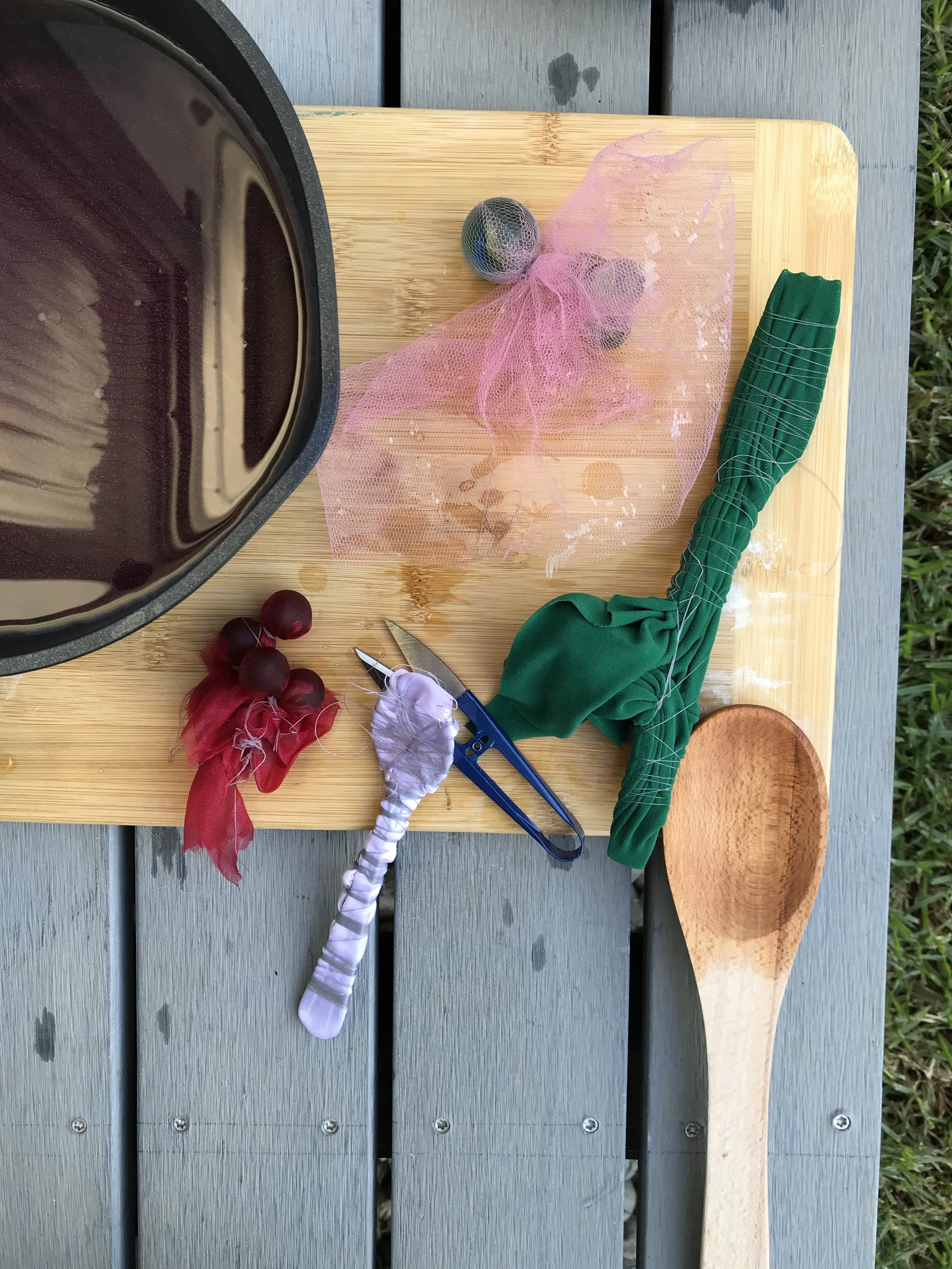
Samples drained of any and all excess water, cutting process and removal of objects; I was left with small pieces of polyester thread as excess waste to this process; using cotton thread or twine would be best, in order to have a waste factor that can be biodegraded in contrast to the use of polyester thread that will sit in landfill as harmful waste unless used in other products such as wearable waste lace that could be heat set into thermo plastic materials?
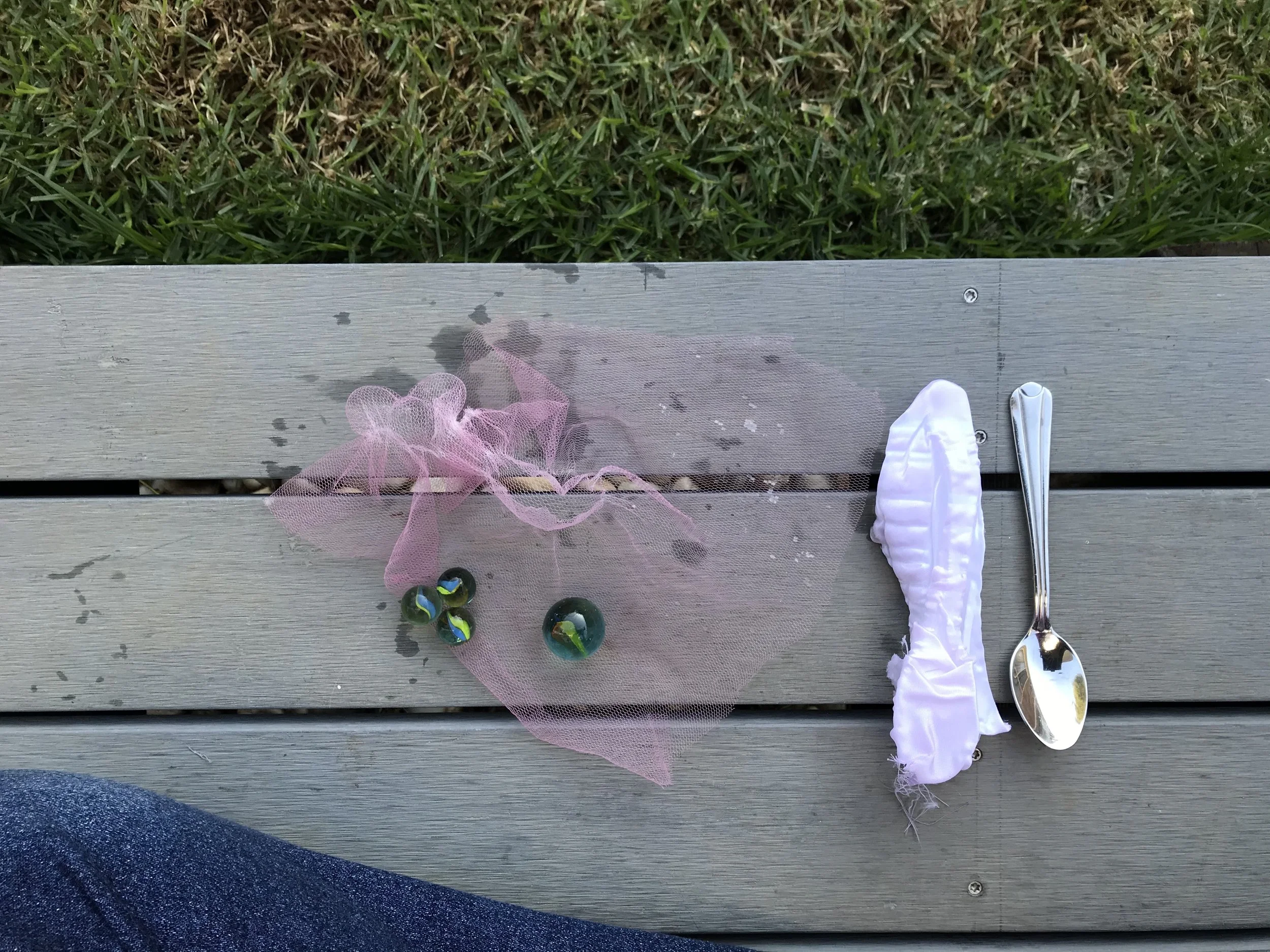
Nylon Tulle and polyester spoon sample drying. The spoon sample did retain the whole shape of the spoon as it was tied closely to the spoon multiple times.
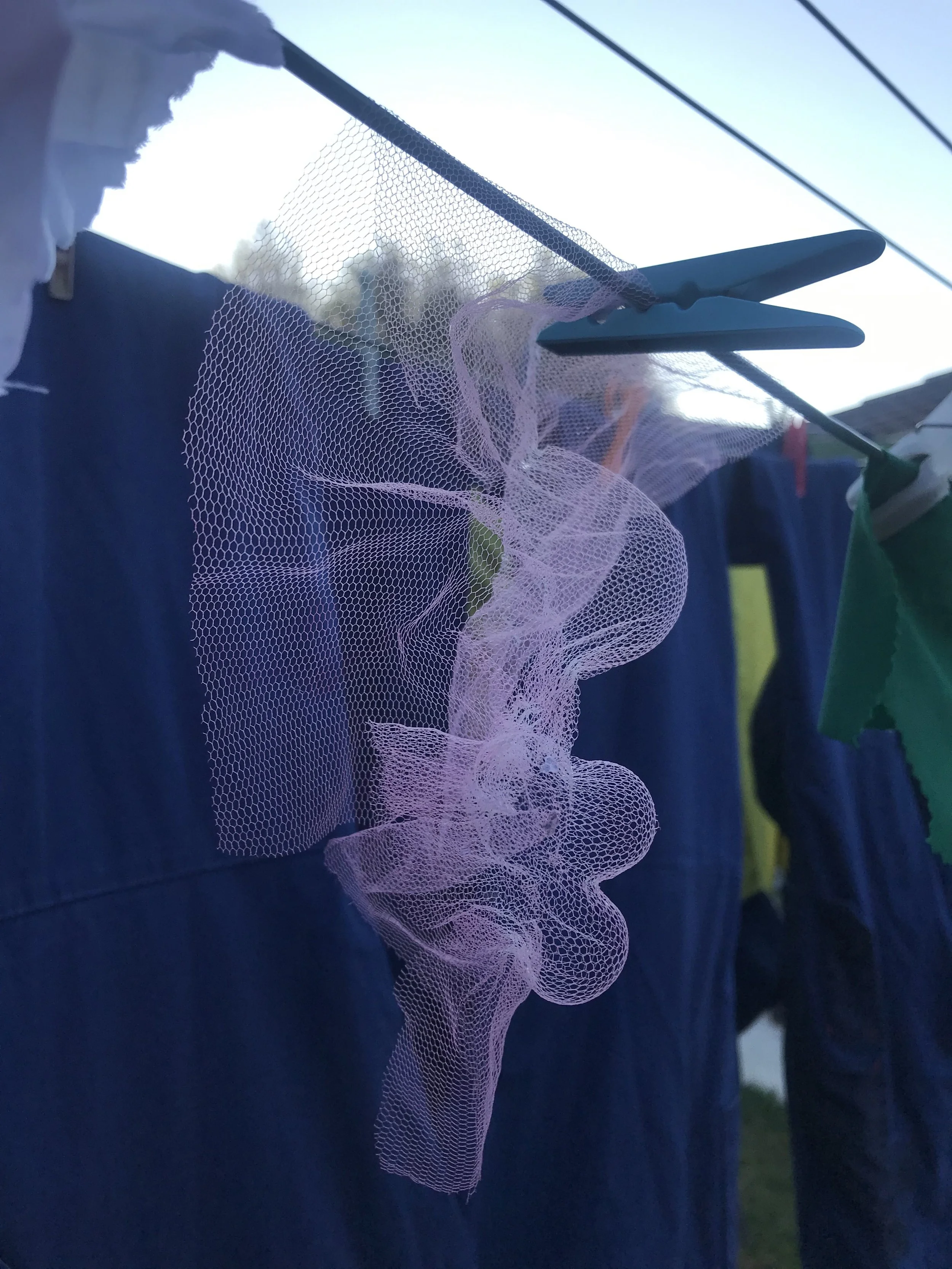
Nylon tulle and glass marbles wrapped taught against the fabric with polyester thread, created a raised surface and elasticated the handle of the Nylon
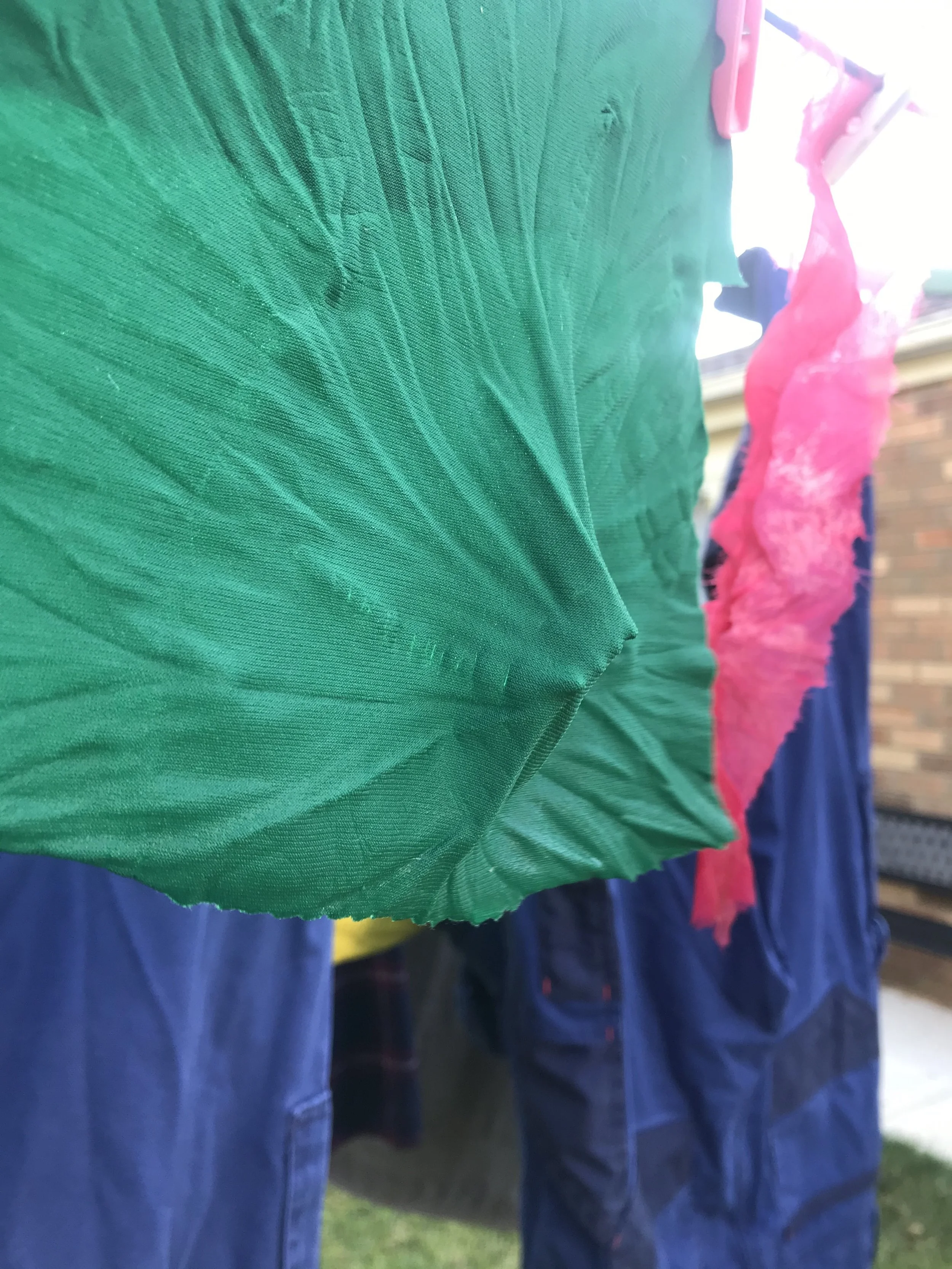
Polyester stretch fabric and a fork that was wrapped taught with polyester thread, created a series of pointy bumps resembling the head of the fork, unfortunately the rest of the handle didn’t appear, due to the way the fabric was wrapped underneath the fork, instead creating the various lines surrounding these pointy bumps
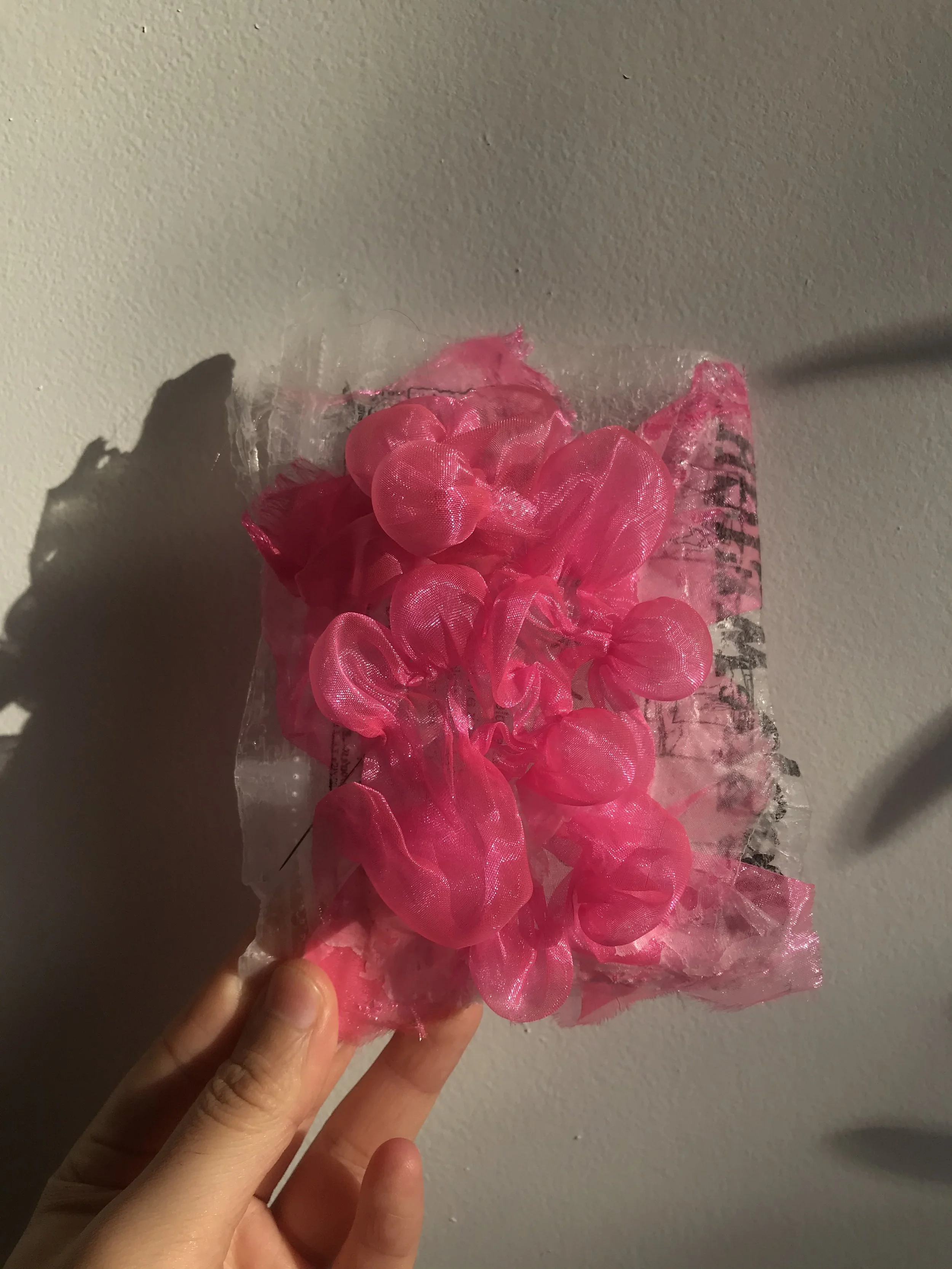
Pink Nylon Tulle wrapped with multiple marbles. To create the seal to the outer laminated shibori layer, The Recycled ‘scoop and weight’ Coles LDPE bag was folded in half and ironed on high settings without steam. This formed a high tensile strength, water resistant and flexible bottom layer that was laminated and pressed onto the laminated shibori fabric bottom. Sealing any and all exposed areas to create an 100% water proof fabric modification
Alexandra Kehayoglou
.
Alexandra Kehayoglou .
Argentinian born Textile artist and installation artist, Kehayoglou creates “ hyper-realist rugs that are homages to nature and inspired by nature to recreate spaces that imitate to an astonishing degree the natural texture of moss, grass or rock” . Kehayoglou also invites the audience to experience the sensorial experience of her work, as displayed at the 2017 NGV triennial and commissioned rugs for Dries Van Noten’s catwalk in 2014.
Vanessa Barragao
.
Vanessa Barragao .
Fibre artist Vanessa Barragao intercepts traditional rug making with added volume by crocheting and manipulating fibres in her rug and hanging installations that focus on materiality and reusing discarded and/or end of life fibres into her latch hook textile works. The use of materials and volume can be explored further through 3d shibori samples as pictured above and added construction techniques, such as latch hooking fabric samples.


